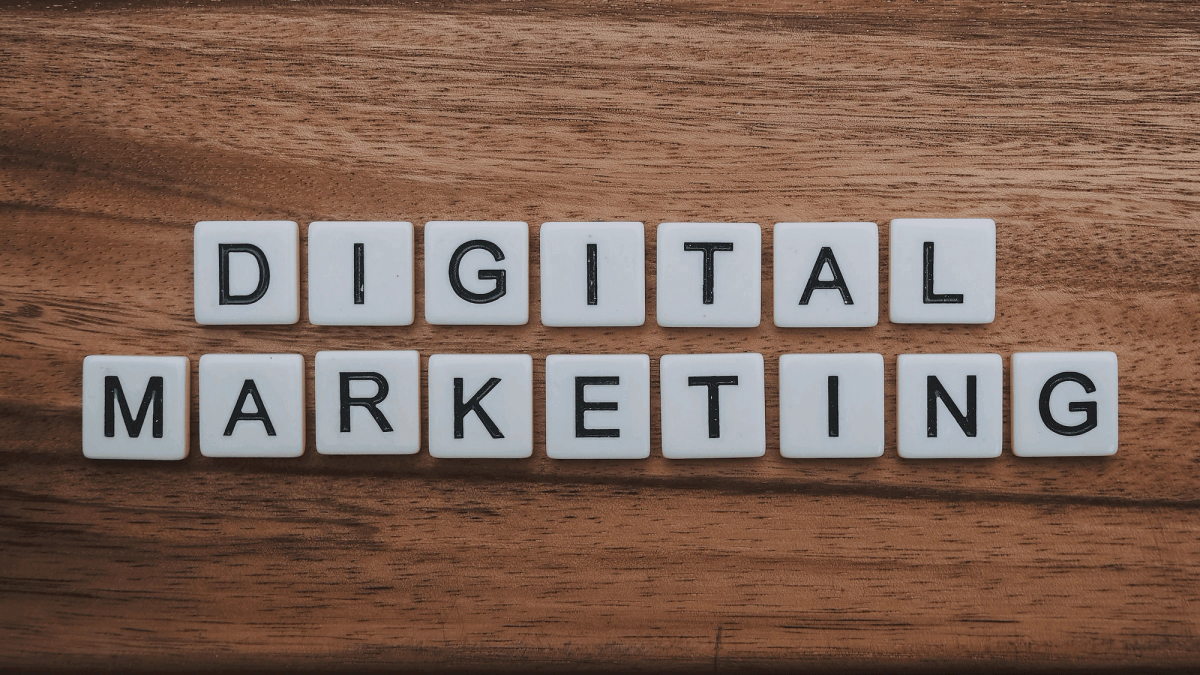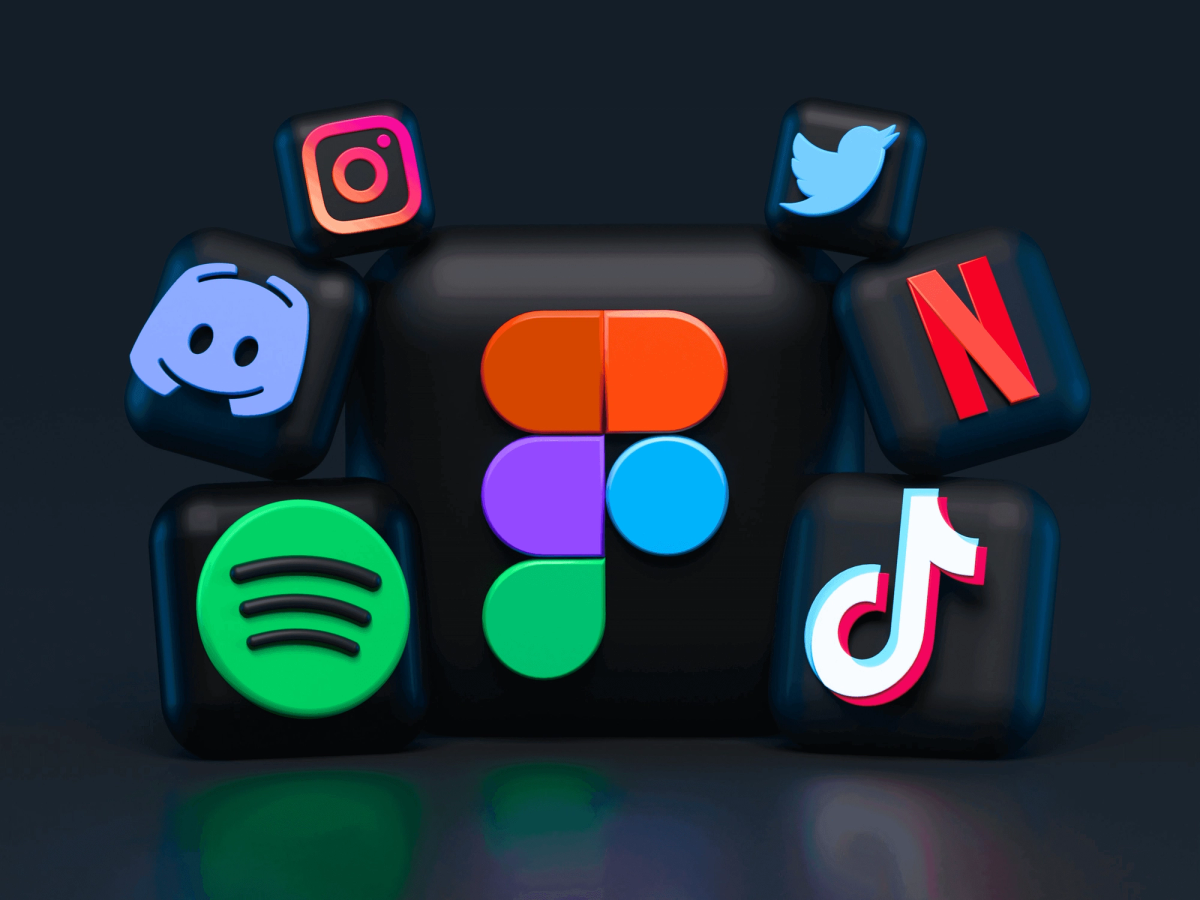What is Digital Marketing? A Comprehensive Overview

Digital marketing is a testament to the transformative power of technology and innovation. Gone are the days when marketing was confined to billboards, radio jingles, and TV slots.
Quick Summary
Digital marketing has revolutionized how brands connect with consumers, moving from traditional methods to real-time engagement across diverse digital channels. Modern consumers actively seek tailored, value-driven content that resonates with their preferences, while brands leverage data and real-time feedback. Key strategies include SEO, social media, and content marketing, all underpinned by continuous adaptation to evolving digital trends, ensuring businesses foster authentic relationships an
Today, in the age of digital technologies, businesses have many digital marketing channels at their fingertips, each offering unique ways to connect, engage, and convert potential customers.
The growth of internet users and the omnipresence of mobile devices have unequivocally contributed to the rise of digital marketing, providing an unparalleled arena for brands and consumers to engage and interact.
The changing dynamics of consumer behavior further accentuate this shift. Modern consumers are not just passive recipients of information; they actively seek out content through search engines, social media, or dedicated platforms, where content and inbound marketing play pivotal roles, offering tailored, value-driven content that resonates with the audience's needs and preferences.
But what truly sets digital marketing apart from its more traditional marketing counterparts? It's the ability to harness the benefits of digital marketing in real time. Brands can now engage in real-time conversations, gather instant feedback, and optimize their marketing channels based on live data.
This dynamic nature, combined with the vast array of marketing channels available—from social media to email campaigns—provides businesses unparalleled opportunities to tailor their strategies, ensuring maximum impact and engagement.
As we explore the digital and inbound marketing realm, it's crucial to recognize its transformative potential.
It's not just about being online; it's about leveraging the power of the digital world to foster genuine connections, drive business growth, and navigate the ever-changing tides of consumer behavior.
Defining Digital Marketing

Digital marketing promotes products, services, or brands to a broad audience through digital channels, platforms, and technologies.
Unlike traditional marketing channels like newspapers or billboards, digital marketing campaigns are primarily executed through online channels, with numerous digital tactics leveraging the power of search engines, social media, email, and websites to reach both potential customers and existing customers.
The shift from traditional to digital ads wasn't just a change in tools but a fundamental transformation in how businesses approach marketing. Traditional advertising was often a one-way conversation, with companies broadcasting their messages to the masses.
Digital marketing, on the other hand, fosters a two-way dialogue, allowing businesses to engage with their target audience, gather feedback, and tailor their marketing efforts in real time.
What Exactly Does a Digital Marketer Do?

Digital marketers are the architects behind the captivating online campaigns you encounter daily. Their roles and responsibilities are diverse, encompassing strategy formulation, content creation, and data analysis, to name a few.
A digital marketer's day might involve:
- Crafting compelling social media posts.
- Analyzing the performance of email marketing campaigns.
- Optimizing web pages for search engine results pages (SERPs).
- Allocating budget for paid advertising on platforms like Google Ads.
They also delve into search engine optimization (SEO) to ensure that a business's online content ranks high in search, drawing organic traffic to their sites.
Furthermore, they might collaborate with influencers for influencer marketing campaigns or employ affiliate marketing tactics to drive sales through third-party recommendations.
The Core Components of Digital Marketing

Digital marketing is a vast field comprising numerous types of digital marketing tactics and strategies aimed at achieving various business objectives. Some types of digital marketing with the core components include:
- Search Engine Optimization (SEO):With so many websites and webpages competing for attention, it's crucial to stand out. That's where SEO comes in. By optimizing your website or webpage, you can boost your visibility and improve your ranking on search engine results pages. Make sure to make sure your online presence is noticed - invest in SEO today.
- Social Media Marketing:To effectively promote products, services, or brands, it is crucial to leverage social media platforms like Facebook, Instagram, and Twitter.
- Content Marketing:Creating valuable, relevant content to attract and retain a target audience, often through blog posts, videos, or infographics.
- Affiliate Marketing:Promoting products through third-party partners who earn a commission for every sale made through their referral.
- Mobile Marketing:Tailoring marketing campaigns for mobile users, ensuring optimal viewing and interaction experience on smartphones and tablets.
- Paid Ads:Using paid advertising methods, such as pay-per-click (PPC) or native advertising, driving traffic and sales.
- Video Marketing:One effective way to advertise a product, service, or brand is by utilizing video content on popular platforms such as YouTube or Vimeo.
- Email Marketing: Engaging with prospective customers through targeted email campaigns.
Digital Marketing Strategy: Crafting a Winning Plan

A well-planned digital marketing strategy is the backbone of every successful marketing campaign. I have ensured no spelling, grammar, or punctuation errors.
This strategy acts as a roadmap, guiding businesses in their online marketing campaigns and efforts, ensuring that every action aligns with their objectives.
A solid digital marketing strategy begins with understanding the target audience.
Who are the audience?
What are their online habits?
Which platforms do they frequent?
Once established, businesses can decide on the best digital marketing strategy and marketing channels to reach them through social media marketing, search engine marketing, or email campaigns.
Next, setting clear, measurable goals is crucial. Whether it's to increase brand awareness, drive sales, or boost website traffic, having defined objectives will shape the direction of the marketing campaigns.
In digital marketing strategies, content holds a crucial position. I have checked for spelling, grammar, or punctuation errors and made corrections as needed.
Whether it's a blog post, a social media update, or an email newsletter, the content should be relevant, engaging, and tailored to the audience's preferences.
Lastly, no one digital channel, digital marketing tactic or strategy is set in stone. The digital realm is ever-evolving, with new trends and technologies emerging constantly.
Thus, regular reviews and adjustments to the content and digital marketing strategy are essential to stay ahead of the curve and ensure continued success in digital marketing efforts.
The 7 C's of Digital Marketing

The 7 C's framework provides a holistic view of the essential elements that form the backbone of any successful digital marketing strategy. Let's delve into each:
- Content:At the heart of digital marketing lies content. Whether blog posts, videos, infographics, or social media posts, content is how brands communicate their message. Effective content marketing informs, engages, and inspires action, making it a cornerstone of digital marketing efforts.
- Context:Understanding the context ensures the content is relevant to the audience. It's about delivering the right message at the right time, considering the user's current buying journey, preferences, and online behavior.
- Community:Digital marketing thrives on community. Brands no longer just broadcast; they engage. Building a loyal community around a brand can amplify marketing efforts, with members acting as brand ambassadors spreading the word organically.
- Channel:With numerous digital media available, from social platforms to email marketing, it's crucial to identify which channels resonate most with the target audience. Each channel offers unique benefits and caters to specific audience segments.
- Commerce:The ultimate goal of many digital marketing campaigns is to drive sales. Integrating commerce elements seamlessly through effective call-to-action prompts or streamlined e-commerce platforms can significantly boost conversion rates.
- Communication:Two-way communication is a hallmark of digital marketing. Brands can now have real-time conversations with their customers, gather feedback, and tailor their marketing strategies accordingly.
- Creative:In the crowded digital space, creativity stands out. Innovative digital campaigns, unique content, and eye-catching visuals can set a brand apart, capturing the audience's attention and leaving a lasting impression.
Digital Marketing Channels: Choosing the Right Platforms

In the vast ocean of digital marketing, numerous channels beckon marketers with their unique advantages and audiences.
However, only some types of the digital ads and marketing channels suit some brands or objectives. Making the right choice can differentiate between a successful campaign and a wasted budget.
Each channel serves a specific purpose and caters to particular audience segments:
- Search Engines:Platforms like Google and Bing where brands can leverage organic SEO and paid search engine marketing (SEM) to drive traffic.
- Social Media Channels:Brands can interact with their audience, share content, and advertise through channels such as Facebook, Instagram, Twitter, and LinkedIn.
- Email:A powerful tool for personalized communication and promotions, email marketing is critical to connecting with potential and existing customers.
- Affiliate Networks:Platforms where brands can collaborate with third-party partners to promote their products or services in exchange for a commission.
- Content Platforms:Websites, blogs, and platforms like Medium or YouTube where brands can publish and share content to engage and educate their audience.
Social Media Marketing: Connecting with Audiences

Social media's rise has revolutionized how brands connect with their audiences. Platforms like Facebook, Instagram, Twitter, and LinkedIn have become integral to our daily lives, offering brands unprecedented access to their audiences.
But with great power comes great responsibility. Navigating the world of social media to power digital marketing campaigns requires a blend of creativity, strategy, and genuine audience engagement.
In this segment, we'll explore the intricacies of different social media platforms, offering strategies to create meaningful connections and drive engagement.
Social media marketing is an assertive way to promote and advertise brands, products, or services. Here's how:
- Choosing the Right Platform:Not all social media platforms are created equal. While Instagram might be perfect for a fashion brand, LinkedIn might be more suited for B2B marketing.
- Engaging Content:From posts to stories, reels to tweets, creating exciting content tailored to each platform is crucial.
- Paid Advertising:Platforms like Instagram and Facebook offer robust advertising tools, allowing brands to target specific demographics and achieve various objectives, from brand awareness to conversions.
- Community Building:Engaging with followers, responding to comments, and fostering community can significantly amplify social media marketing efforts.
Search Engine Optimization (SEO): Ranking Higher on Search Engines

Whether users are looking for a product service or simply seeking information, search engines like Google, Bing, and Yahoo are often their first port of call, which makes Search Engine Optimization (SEO) critical to any effective digital strategy.
But what does it take to rank higher on these search engines?
How can you make your brand stand out in a crowded search result?
This section dives deep into the world of SEO, offering actionable insights to enhance your website's visibility and drive organic traffic:
- Keyword Research:When attracting potential customers, it is crucial to identify and integrate relevant keywords that they might use in their search queries, increasing product or service visibility and search result ranking.
- On-Page SEO:Optimizing individual web pages, ensuring that content, meta tags, and URL structures are search-engine-friendly.
- Off-Page SEO:Activities that drive referral traffic to your website, like backlinking from reputable sources.
- Technical SEO:Ensuring a website's backend structure is optimized for search engine crawling and indexing.
Pay-Per-Click Advertising: Driving Immediate Traffic

While organic strategies like SEO offer long-term benefits, sometimes brands need immediate results. Enter Pay-Per-Click (PPC) advertising.
PPC provides instant visibility and drives targeted traffic to your site, whether launching a new product, promoting a sale, or targeting a specific audience. But how does it work?
And how can you ensure a positive return on your ad spend?
- Keyword Bidding:Advertisers bid on keywords relevant to their target audience, ensuring their ads appear on search engine results pages.
- Ad Creation:Crafting compelling advertisements that resonate with the target audience, prompting them to click.
- Landing Page Optimization:Ensuring that the page users land on after clicking the ad is relevant, engaging, and optimized for conversions.
- Budget Management:Setting and managing budgets to ensure optimal ROI from PPC campaigns.
Email Marketing: Engaging Directly with Customers

Email remains a constant in the age of fleeting social media posts and ever-changing algorithms. Brands can directly connect with customers without third-party platforms. But with excellent access comes the challenge of standing out in crowded inboxes.
Crafting compelling email narratives and segmenting audiences drives action.
Here's how to harness its power:
- Personalization:Tailoring emails to individual recipients boosts engagement. Using data, marketers can segment their audience and send relevant content, offers, and updates.
- Automation:Marketing automation tools allow for timely and consistent communication. For instance, automated welcome emails can immediately engage new subscribers.
- Design and Content:A well-designed email with compelling content can significantly increase open and click-through rates. It's essential to balance visuals and text, ensuring mobile optimization.
- Analytics:Tools like Google Analytics can track email marketing metrics, offering insights into open rates, click-through rates, and conversion rates, helping refine future campaigns.
- Opt-in and Compliance:Ensuring subscribers have willingly opted-in is crucial. It not only builds trust but also complies with regulations like GDPR.
Content Marketing: Telling Your Brand's Story

Content marketing is more than just information; the narrative shapes a brand's identity. Content marketing goes beyond mere advertising; it's about weaving a compelling story that resonates with your audience, building trust, and fostering engagement.
Whether through blog posts, eBooks, or infographics, your content marketing strategy offers a platform to showcase your brand's values, expertise, and vision.
Here are some strategies and nuances for crafting content that not only informs but also captivates and converts:
- Types of Content:From blog posts, infographics, and e-books to podcasts and webinars, the content spectrum is vast. The correct format depends on the audience's preferences and the brand's message.
- Content Strategy:A solid content marketing strategy aligns with the brand's overall marketing strategy. It defines the content's purpose, the target audience, and the channels for distribution.
- Creation and Curation:While original content showcases a brand's expertise, curating content from reputable sources can also provide value to the audience.
- SEO and Content: Integrating search engine optimization techniques ensures the content organically reaches its intended audience.
Affiliate Marketing: Leveraging Partnerships for Sales

The power of collaboration cannot be understated in the digital realm. Affiliate marketing is a testament to this, where brands and partners unite to drive mutual growth. Brands can leverage the reach and influence of affiliates to expand their audience, boost sales, increase brand awareness and enhance their online presence.
How can one develop an effective strategy for affiliate marketing? How do you choose the right partners?
- How It Works:Brands provide affiliates with unique tracking links. When a customer purchases by clicking on this link, the affiliate earns a commission.
- Benefits:Affiliate marketing offers a cost-effective way to drive traffic and sales. Brands only pay for actual sales, making it a low-risk strategy.
- Choosing Affiliates:Collaborating with the right affiliates aligned with the brand's values and target audience is crucial for success.
Mobile Marketing: Reaching Customers on the Go
The world is at our fingertips with the proliferation of smartphones and tablets. Mobile marketing capitalizes on this ubiquity, offering brands a direct channel to reach customers wherever they are.
Mobile marketing strategies are diverse and dynamic, from app-based marketing and location-targeted ads to SMS campaigns.
- Responsive Design:Websites and emails must be optimized for mobile devices, ensuring easy navigation and readability.
- Mobile Apps:Brands can develop apps to offer value, be it through services, entertainment, or shopping.
- Location-Based Marketing:Leveraging GPS technology, brands can send targeted offers to users based on their real-time location.
- SMS Marketing:Despite the rise of messaging apps, SMS remains an effective channel for time-sensitive offers and updates.
Video Marketing: The Rise of Visual Content

"A picture is worth a thousand words" has expanded to "a video is worth a million" in the digital era.
With its blend of visuals, sound, and narrative, video content offers an unparalleled medium to engage audiences.
Whether short-form videos on platforms like TikTok or long-form content on YouTube, video marketing has reshaped how brands communicate and connect.
- Platforms:While YouTube remains a dominant platform, channels like Facebook, Instagram, and TikTok also offer vast potential for video content.
- Types of Videos:From tutorials, testimonials, and webinars to animated explainer videos, the possibilities are endless.
- SEO for Videos:Like text content, videos can be optimized for search engines, ensuring they reach a broader audience.
- Live Streaming:Platforms like Facebook Live and Instagram Live allow brands to engage with their audience in real time, fostering a deeper connection.
Influencer Marketing: Collaborating for Authentic Promotion

In a world saturated with advertisements, authenticity stands out. Influencer has solid digital marketing strategy that utilizes people who have established trust with their followers.
By collaborating with influencers, brands can access genuine endorsements, reach niche communities, and create resonant content.
But how do you choose the right influencer? And how do you ensure a collaboration aligns with your brand values?
- Identifying the Right Influencers:Not all influencers are created equal. Brands should look for individuals whose audience aligns with their target demographics and whose values resonate with the brand's ethos.
- Micro vs. Macro Influencers:While macro influencers have vast followings, micro-influencers, with their smaller but highly engaged audiences, can offer a more personal touch and higher engagement rates.
- Collaboration and Authenticity:Successful influencer marketing hinges on genuine collaboration. Brands should allow influencers creative freedom, ensuring the content remains authentic and resonates with their audience.
- Measuring Success:Using analytics tools, brands can measure the impact of influencer campaigns, from engagement rates to conversion metrics.
How Do I Start Digital Marketing?

Embarking on the digital marketing journey can seem daunting. With a plethora of digital channels, strategies, and tools to choose from, where does one begin? Whether you're a seasoned marketer looking to transition to the digital realm or a newcomer eager to make your mark, this segment is your roadmap.
Dive in to kickstart your digital marketing adventure with confidence:
- Education:Start with online courses, webinars, and workshops. Platforms like Coursera, Udemy, and LinkedIn Learning offer courses on various digital marketing topics.
- Choose a Niche:Digital marketing is vast. Beginners might find it beneficial to specialize initially in social media marketing, SEO, or email marketing.
- Hands-on Experience:Theory is essential, but practice makes perfect. Start with small projects, pro bono, to build a portfolio.
- Networking:Join digital marketing communities online and offline. Engage in discussions, attend conferences, and connect with experienced digital marketers.
Is Digital Marketing Hard for Beginners?

With its myriad tools, platforms, and strategies, the world of digital marketing can seem overwhelming to those just starting. But is it truly as complex as it appears? Common concerns include:
- The Learning Curve:While there's much to learn, abundant online resources, courses, and communities can help beginners navigate the field.
- Staying Updated:The digital realm is dynamic. However, this constant evolution also means there's always something new and exciting to learn.
- Technical Aspects:Some areas, like SEO or marketing automation, can be technical. But with tools becoming more user-friendly, even those without a tech background can master them with practice.
Essential Tools for Digital Marketers

Just as a craftsman is only as good as their tools, a digital marketer's efficiency and effectiveness are often tied to their software and platforms.
To streamline efforts and maximize results, digital marketers rely on a suite of tools:
- SEO:Tools like SEMrush and Moz offer insights into keyword rankings, backlink analysis, and site health.
- Social Media Management:Marketers can schedule posts, engage with their audience, and analyze social media performance using platforms like Hootsuite and Buffer.
- Email Marketing:Tools such as Mailchimp and HubSpot facilitate email campaign creation, automation, and performance tracking.
- Analytics:Google Analytics is indispensable, offering insights into website traffic, user behavior, and conversion metrics.
- Paid Advertising:Google Ads and Facebook Ad Manager are platforms where marketers can create, manage, and analyze ad campaigns.
Analytics and Data: Measuring Digital Marketing Success

In the digital realm, decisions driven by data often lead to success. Analytics provide a window into the performance of campaigns, offering insights that can shape strategies and drive improvements.
Making data-driven decisions ensures that digital marketing skills and efforts are directed efficiently:
- Understanding Metrics:From click-through rates in email campaigns to website bounce rates, understanding what each metric signifies is crucial.
- Conversion Tracking:Tools like Google Analytics allow marketers to track conversions, understanding which channels and strategies are driving results.
- A/B Testing:Before rolling out campaigns, marketers can test variations to see which resonates more with the audience.
- Audience Insights:Analytics can offer deep insights into the target audience, from demographics to online behavior, helping tailor future marketing strategies.
What to Do Exactly in Digital Marketing?

While the broader concepts of an effective digital marketing strategy are known to many, the exact steps to execute a successful campaign can be elusive.
Here's a step-by-step guide to launching a successful campaign:
- Define Objectives:Whether it's brand awareness, lead generation, or sales, clearly defining the campaign's goals is the first step.
- Research and Identify Target Audience:Understand who you're speaking to. Segment the audience based on demographics, online behavior, and purchasing habits.
- Choose the Right Digital Channels:Depending on the target audience and objectives, select the most effective digital marketing channels, be it social media, email, or paid ads.
- Develop Content:Craft compelling content tailored for each channel, from blog posts and videos to infographics and social media updates.
- Implement SEO Techniques:Optimize content to ensure it ranks well in search, driving organic traffic.
- Launch and Monitor:Once the campaign is live, use digital analytics tools to monitor performance, adjusting strategies for optimal results.
Building a Digital Marketing Team

Every successful digital marketing campaign is backed by a team of skilled professionals with distinct talents.
From content creators to data analysts, this section delves into the roles and structures of a digital marketing team, offering insights into hiring, collaboration, and team dynamics:
- Roles to Consider:Digital Marketing Strategist:Oversees the strategy, ensuring alignment with business goals.
Roles to Consider:
Digital Marketing Strategist:Oversees the strategy, ensuring alignment with business goals.
- Content Creator:Crafts compelling content, from blog posts to social media updates.
- SEO Specialist:Ensures content is optimized for search engines.
- Social Media Manager:Manages social media channels, from content scheduling to community engagement.
- Data Analyst:Interprets campaign data, offering insights for optimization.
Hiring:Look for candidates who have the required skills and fit the company culture. Consider both in-house hires and freelancers.
Collaboration:We must create an environment that prioritizes collaboration, encourages open brainstorming, and enables us to work together towards a unified goal.
Staying Updated: The Ever-Evolving Digital Landscape

Digital marketing is in constant flux, with new platforms, tools, and strategies emerging regularly. For marketers, staying updated isn't just beneficial—it's essential.
Explore the importance of continuous learning power digital marketing campaigns and the resources that can help marketers stay ahead of the curve:
- Continuous Learning:Encourage team members to take courses, attend webinars, and participate in workshops.
- Follow Industry Leaders:Stay updated with insights from digital marketing leaders and influencers.
- Engage in Communities:Join digital marketing forums and groups, participating in discussions and staying abreast of the latest developments.
Personalization: Tailoring Experiences for Each User
Consumers crave personalized experiences. Brands that tailor content and campaigns to individual users may increase engagement and loyalty.
This section explores the strategies and tools that enable effective personalization in digital marketing:
- Data Collection:Use tools to gather data on user behavior, preferences, and interactions.
- Segmentation:Segment the audience based on the collected data, tailoring content and campaigns accordingly.
- Dynamic Content:Use technologies that allow for content to change based on user behavior. For instance, showing product recommendations based on browsing history.
- Benefits:Personalization can lead to higher engagement rates, increased loyalty, and better conversion rates.
Automation in Digital Marketing

Efficiency is the name of the game in digital marketing. Automation tools and strategies allow marketers to streamline processes, ensuring consistent engagement and freeing time for design and creativity.
Dive into the world of marketing automation, its benefits, and how to implement it effectively:
- Email Marketing Automation:Different software can send automated emails based on triggers like new subscriptions or abandoned carts.
- Social Media Scheduling:Platforms like Buffer allow scheduling posts across various social media channels.
- Ad Campaign Optimization:Platforms like Google Ads can automatically adjust bids for maximum ROI.
- Benefits:Automation saves time and ensures that campaigns run smoothly, with minimal manual intervention.
The Role of AI in Digital Marketing

Artificial Intelligence (AI) has moved beyond science fiction and is now a reality. I will ensure the text is free of spelling, grammar, and punctuation errors.
In digital marketing, AI offers predictive analytics, chatbots, personalized content recommendations, and native advertising, among other innovations.
Explore how AI is reshaping the digital marketing landscape, offering enhanced user experiences and more efficient campaigns:
- Predictive Analytics:Marketers can use AI to predict consumer behavior and tailor strategies.
- Chatbots:These AI-driven tools can engage with users in real time on websites, answering queries, guiding product choices, and even facilitating sales, enhancing the user experience.
- Personalization:AI can analyze user behavior to offer personalized content, product recommendations, and targeted ads, ensuring a more tailored user experience.
- Content Creation:Some AI tools can generate essential content, be it news updates or financial reports, freeing time for digital marketers.
- Benefits:Incorporating AI into digital marketing strategies can lead to more efficient campaigns, better ROI, and a more personalized user experience.
How Can I Start Digital Marketing with No Experience?
Getting started in digital marketing without prior experience is achievable.
However, anyone can carve a niche in this dynamic field with the right resources, guidance, and determination.
- Educate Yourself:Numerous online courses, webinars, and workshops are available. Platforms like Coursera and Udemy offer foundational courses in digital marketing.
- Hands-on Experience:Start with personal projects. Create a blog, manage social media profiles, or even offer pro bono services to local businesses to build a portfolio.
- Networking:Connect with experienced digital marketers, attend industry events, and join online communities to gain insights and establish contacts.
- Stay Updated:The digital realm is ever-evolving. Regularly read industry blogs, news, and updates to stay informed.
The Ethics of Digital Marketing

As digital marketing tactics and strategies become more sophisticated, ethical considerations emerge.
From data privacy concerns to transparent advertising practices, this segment delves into the moral dimensions of digital marketing, offering guidance on navigating these complex issues:
- Data Privacy:Marketers must ensure ethical collection, storage, and use of user data under regulations such as GDPR.
- Transparency:Users should be informed about their data use, including clear privacy policies and opt-in/opt-out options.
- Avoiding Misinformation:Ensure that the promoted content is accurate and not misleading.
- Ethical Advertising:Avoid targeting vulnerable populations or using tactics that might be considered invasive or inappropriate.
The Future of Digital Marketing: Trends on the Horizon

As we look to the future, what trends and innovations will shape the next decade of digital marketing?
From emerging technologies to shifting consumer behaviors, this section offers predictions and insights into the future landscape of digital marketing:
- Voice Search:It is imperative to optimize for voice search with the rapid increase in the usage of smart speakers and assistants.
- AR and VR:These technologies offer immersive brand experiences, from virtual try-ons to interactive 3D ads.
- 5G Technology:Faster internet speeds will revolutionize content consumption and lead to more instantaneous online interactions.
- Sustainability:As consumers become more eco-conscious, brands must showcase their sustainability efforts in marketing strategies.
Integrating Offline and Online Marketing Efforts

Many businesses underestimate the value of offline and digital marketing efforts, but in reality, it is a crucial component of any successful marketing strategy. However, combining the two channels can be incredibly effective.
Discover strategies to create a cohesive brand experience, bridging the gap between offline and online marketing efforts:
- Consistent Branding:Ensure that branding elements like logos, color schemes, and messaging are consistent across all platforms, be it a billboard or a Facebook ad.
- Cross-Promotion:Promote online campaigns in offline mediums and vice versa. For instance, use QR codes in print ads to direct users to online platforms.
- Data Integration:Combine offline sales data with online analytics to comprehensively view marketing efforts and adjust strategies accordingly.
- Events and Experiences:Host events or experiences and promote them online. Conversely, leverage offline events to drive online engagement, like live-tweeting a product launch.
Overcoming Common Digital Marketing Challenges

Understanding and addressing potential pitfalls can lead to a successful digital marketing campaign:
- Content Saturation:With the vast amount of content online, standing out is challenging. Address this by creating high-quality, unique content tailored to your target audiences.
- Changing Algorithms:Platforms like Google and Facebook frequently update their algorithms. Stay updated and be ready to adapt your strategies.
- Data Privacy Concerns:With regulations like GDPR, data privacy is paramount. Be transparent about data collection and usage.
- Ad Blockers:The rise of ad blockers means marketers must find more organic ways to reach audiences, like content marketing or influencer collaborations.
- Skill Gaps:The digital landscape is ever-evolving. Continuous training and upskilling are essential to address the changing demands of Internet marketing.
Budgeting for Digital Marketing
Allocating resources effectively is crucial for any digital marketing campaign's success. Whether working with a shoestring budget or having ample funds, understanding how to distribute your budget across platforms and strategies is vital.
- Set Clear Objectives:Understand what you aim to achieve: brand awareness, lead generation, or sales.
- Prioritize Channels:Based on your objectives and target audience, allocate the budget to the most effective digital channels.
- Monitor and Adjust:Regularly review campaign performance. Reallocate the budget based on what's working and what's not.
- Consider Both Paid and Organic Strategies:While paid ads can offer immediate results, organic strategies like SEO or content marketing provide long-term benefits.
Engaging International Audiences: Global Digital Marketing
Businesses are no longer confined to local or national borders in our interconnected world. The digital realm offers the potential to reach audiences from every corner of the globe.
However, global digital marketing is not just about expanding reach; it's about resonating with diverse cultures, languages, and preferences.
- Cultural Sensitivity:Understand and respect cultural nuances. What works in one country might not resonate in another.
- Localization:This goes beyond translation. Ensure content, ads, and product offerings are tailored to local preferences.
- Regulatory Compliance:Different countries have different regulations around digital advertising and data privacy. Stay compliant to avoid legal pitfalls.
- Platform Preferences:While Facebook might be popular in one country, another might have the most internet users on a local platform.
User Experience (UX) and Its Role in Digital Marketing

A beautifully designed website or a well-crafted advertisement is only as good as the user experience it provides. UX goes beyond aesthetics; it's about how a user interacts with, perceives, and feels about a digital platform.
A positive UX can differentiate between a converted customer and a lost opportunity.
- Website Design:Ensure your website is intuitive, mobile-responsive, and fast-loading.
- Content Layout:Information should be easily accessible. Use clear headings, bullet points, and visuals.
- Interactive Elements:Engage users with interactive elements like quizzes, polls, or chatbots.
- Feedback Loop:Regularly collect feedback and make necessary adjustments to enhance the user experience.
Building Trust in the Digital Age
Trust has always been the cornerstone of any successful business relationship. However, building and maintaining trust presents unique challenges in the digital age, where interactions often need more face-to-face authenticity.
In an era where misinformation is rampant, building brand credibility is crucial:
- Transparency:Be open about business practices, especially data collection and usage.
- Authenticity:Avoid overly promotional content. Focus on genuine storytelling and value-driven content.
- Reviews and Testimonials:It is considered a best practice to motivate content customers to share their feedback through reviews. Positive feedback builds trust in your business.
- Engage, Don't Ignore:Engage with your audience, address concerns, and handle negative feedback gracefully.
Interactive Marketing: Engaging Users in Real-Time

In the age of instant gratification, interactive marketing stands out as a dynamic approach that engages users in real time, fostering a deeper connection between brands and their audiences.
Unlike traditional digital marketing techniques, where communication is one-way, interactive marketing encourages a two-way dialogue.
- Benefits:Immediate Feedback:Brands can instantly gauge user reactions and adjust their strategies accordingly.
Benefits:
Immediate Feedback:Brands can instantly gauge user reactions and adjust their strategies accordingly.
- Enhanced Engagement:Interactive elements can keep internet users engaged longer, increasing the chances of conversion.
- Personalized Experience:Real-time interactions allow for tailored user experiences based on immediate feedback.
Strategies:
- Polls and Quizzes:Engage users with fun, relevant quizzes or polls on social media platforms or websites.
- Live Streaming:Use platforms like Facebook Live or Instagram Live to connect with audiences in real-time, showcasing behind-the-scenes looks or hosting Q&A sessions.
- Chatbots:Implement AI-driven chatbots on websites or digital channels to answer queries, guide product choices, or facilitate sales.
Voice Search in Digital Marketing

With the proliferation of smart speakers and voice-activated assistants like Alexa or Siri, voice search is rapidly becoming a significant player in the digital landscape.
This shift necessitates rethinking of traditional marketing methods, SEO, and content strategies.
- Adapting to Voice-Activated Searches:Conversational Content:Voice searches are typically more conversational. Content should be optimized to answer questions users might ask.
Adapting to Voice-Activated Searches:
Conversational Content:Voice searches are typically more conversational. Content should be optimized to answer questions users might ask.
- local SEO:Many voice searches are local, like "restaurants near me." Ensure local SEO strategies are robust.
- Schema Markup:Implementing this can improve your content's context for better voice search results.
The Role of VR and AR in Marketing
VR and AR are no longer just buzzwords; they transform how brands engage with their audiences.
Mobile technologies are blurring the lines between digital and physical worlds, offering immersive experiences on mobile devices.
- Engaging Users with Immersive Experiences:Virtual Try-Ons:Retailers can offer users the ability to try on clothes, glasses, or makeup virtually.
Engaging Users with Immersive Experiences:
Virtual Try-Ons:Retailers can offer users the ability to try on clothes, glasses, or makeup virtually.
- Interactive Demos:Real estate companies can provide virtual property tours, while travel agencies can offer immersive destination previews.
- Gamified Promotions:Brands can create AR games or challenges, encouraging user interaction and engagement.
Community Building: Engaging with Loyal Fans

Building a community around a brand goes beyond just making sales.
It's about fostering loyalty, encouraging advocacy, and creating a space where fans feel valued.
- Strategies for Fostering Brand Advocates:Engage Regularly:Regularly interact with the community on online platforms, be it through comments, polls, or live sessions.
Strategies for Fostering Brand Advocates:
Engage Regularly:Regularly interact with the community on online platforms, be it through comments, polls, or live sessions.
- Exclusive Content:Offer community members exclusive content or early access to products.
- Feedback Loops:Encourage feedback and genuinely act on it, showcasing that the brand values its community's input.
Crisis Management in Digital Marketing
In the age of rapid information dissemination, where a single tweet or post can go viral in minutes, crisis management has become an indispensable part of any successful marketing strategy.
Handling PR issues in the digital age requires agility, transparency, and a well-thought-out strategy.
- The Speed of the Internet:Unlike traditional media, where there's often a buffer between an incident and widespread knowledge, the Internet offers no such grace period. A minor issue can escalate quickly if not addressed promptly.
- Immediate Response:The first 24 hours after a crisis break are crucial. Brands should acknowledge the problem, even if a complete response will take time.
- Transparency is Key:In the age of digital devices and savvy internet users, trying to hide or downplay a crisis can backfire. Honesty is the best policy.
- Engage with the Community:Use digital platforms to communicate directly with your target audiences. Address concerns, clarify misunderstandings, and showcase the brand's commitment to resolving the issue.
Continuous Learning: Courses and Certifications for Digital Marketers
The digital landscape is ever-evolving. For digital marketers, continuous learning isn't just recommended; it's essential.
As new technologies emerge and online marketing tactics shift, staying updated ensures you remain at the forefront of the industry.
- Online Courses:Platforms like Coursera, Udemy, and LinkedIn Learning offer various courses on various digital marketing topics, from SEO to affiliate marketing.
- Certifications:Google offers certificates in areas like Google Ads and Analytics. Similarly, platforms like HubSpot provide certifications in inbound marketing.
- Workshops and Webinars:Attending seminars or webinars can provide valuable insights into industry trends and best practices.
- Networking:Engaging with other professionals in the field through online communities or business-to-business events can offer valuable insights and learning opportunities.
Conclusion

As we conclude this comprehensive blog post on the vast expanse of digital marketing, it's undeniable that the whole digital advertising realm is a blend of intricate challenges and unparalleled opportunities.
The intricacies of various digital marketing channels, from content marketing to affiliate marketing, and the nuances of inbound marketing all fall under the umbrella of online marketing. Yet, the essence of it all is understanding and leveraging the benefits of digital marketing.
Why is digital marketing important? Beyond the obvious advantages of reaching a global audience, it allows brands to connect more deeply with their target demographics, fostering genuine relationships and driving business growth.
The types of marketing channels, like the search engine marketing engines and social media marketing, are valuable tools that can be leveraged.
Crafting an effective digital marketing strategy that resonates with the audience is where the real magic lies.
For those poised to delve deeper into internet marketing, the mantra is simple yet profound: continuous evolution, adaptability, and an unwavering focus on delivering authentic value.
As you stand on the cusp of the digital frontier, remember that every tool, every strategy, and every piece of knowledge we've shared is a stepping stone.
So, take a deep breath, embrace the dynamic world of digital marketing, and embark on a journey to carve your distinct mark.
Harness the power of each digital marketing channel and strategy, and let your brand story resonate in this ever-evolving landscape.
Maria Kanic is a marketing specialist at AMW.